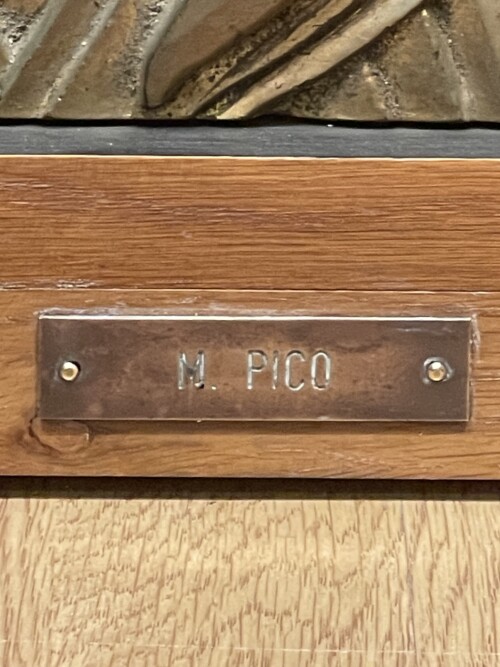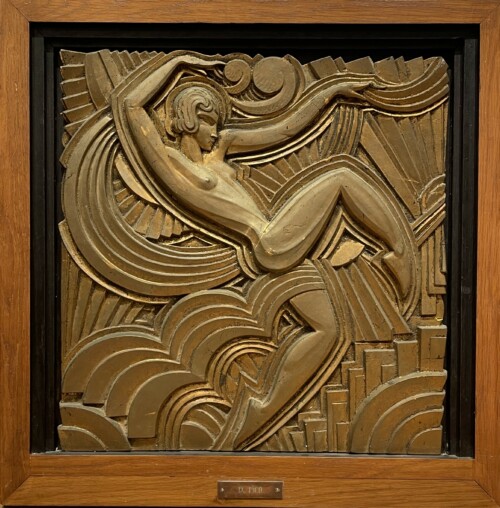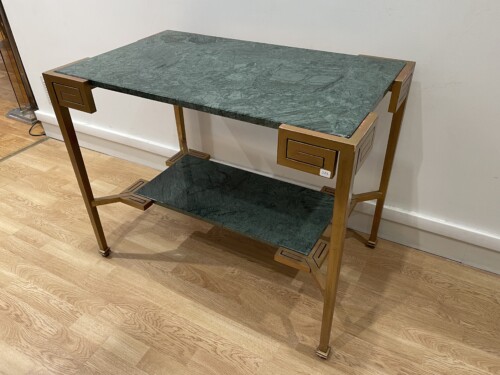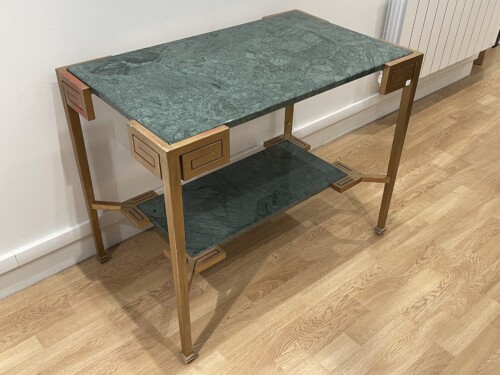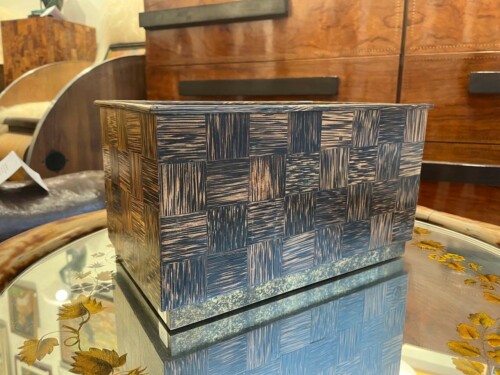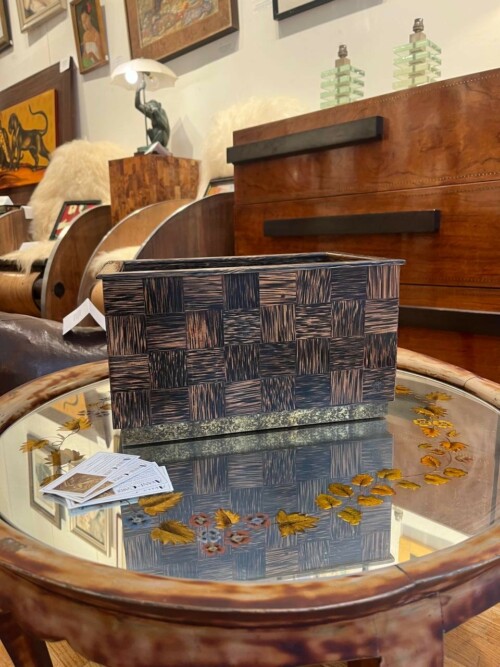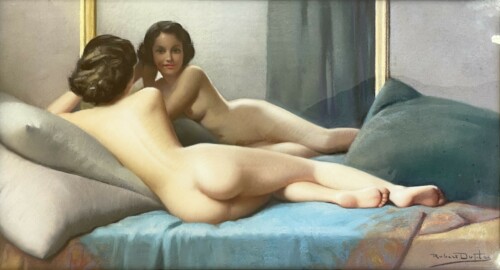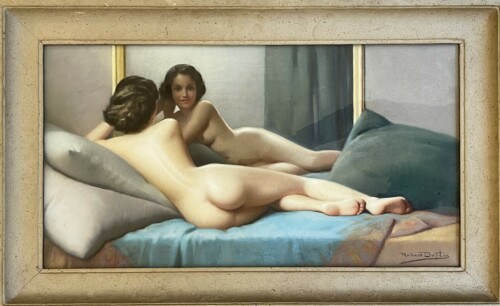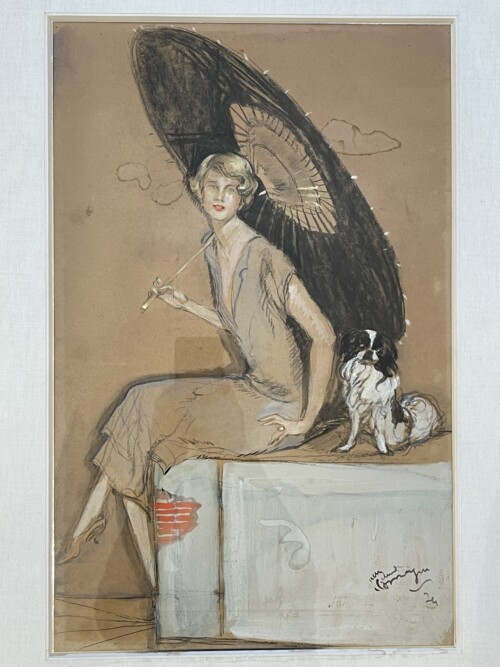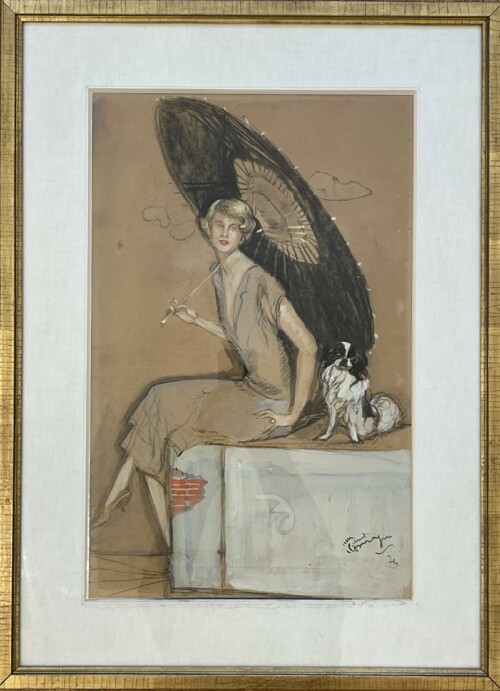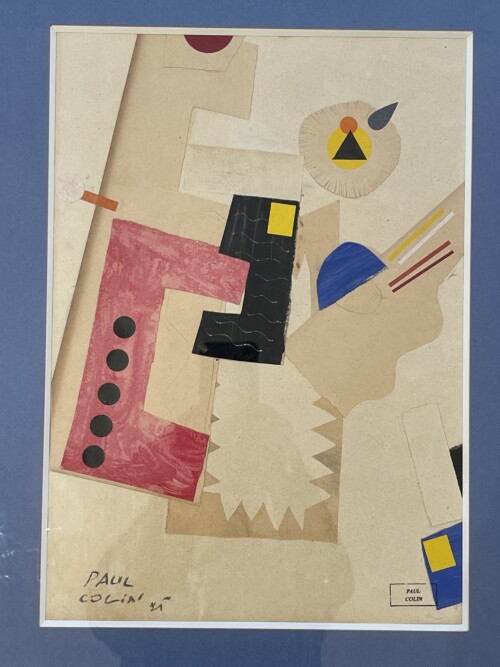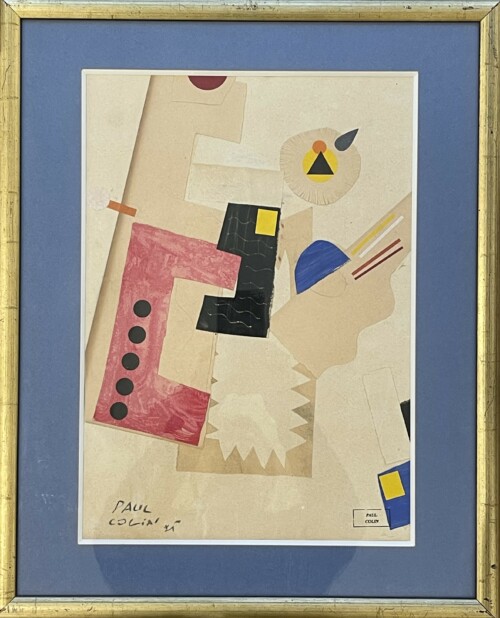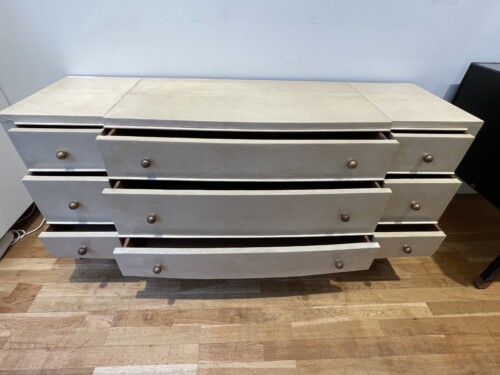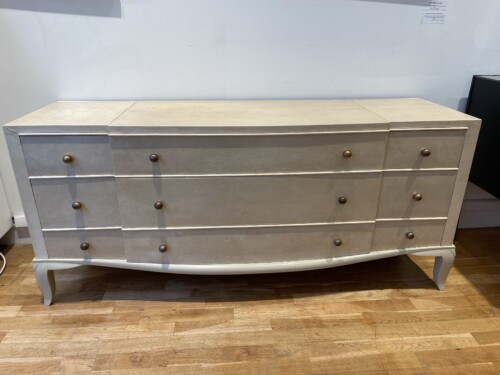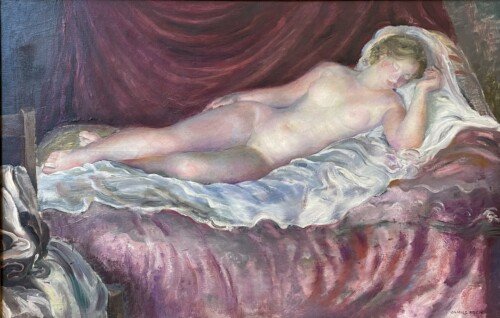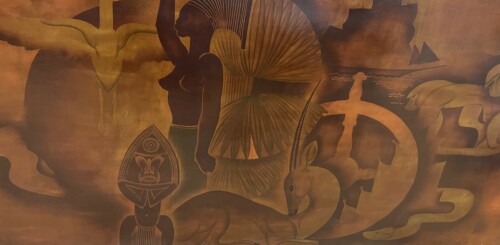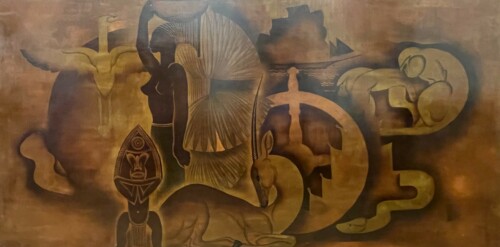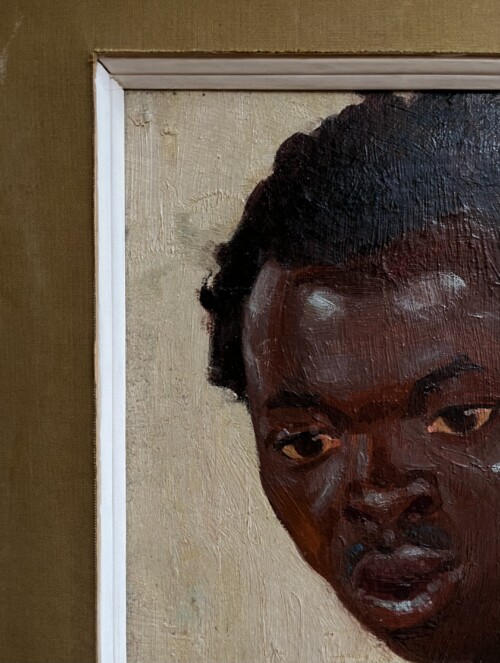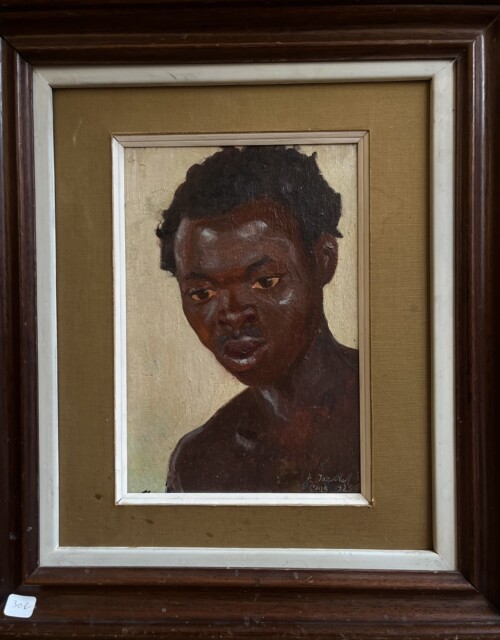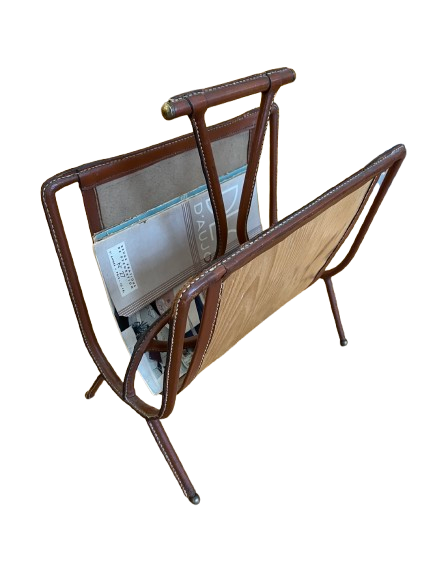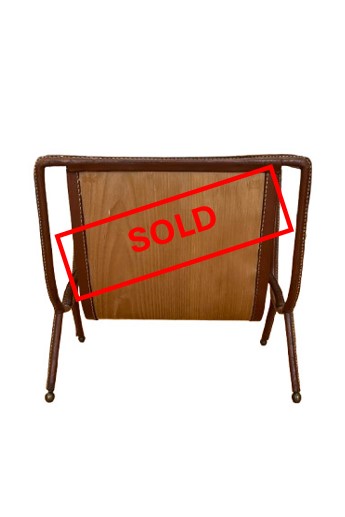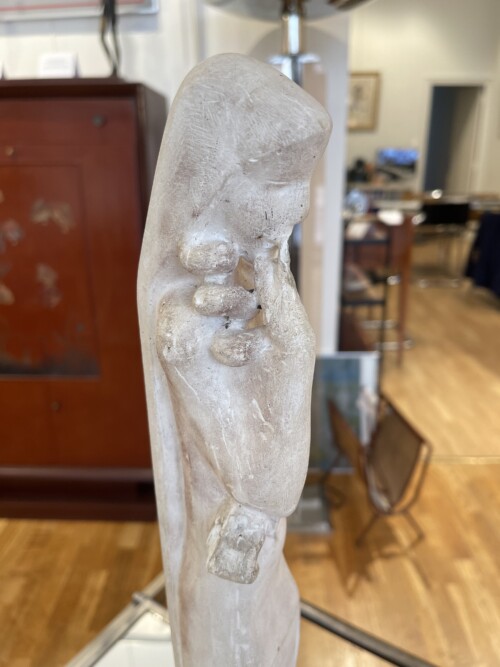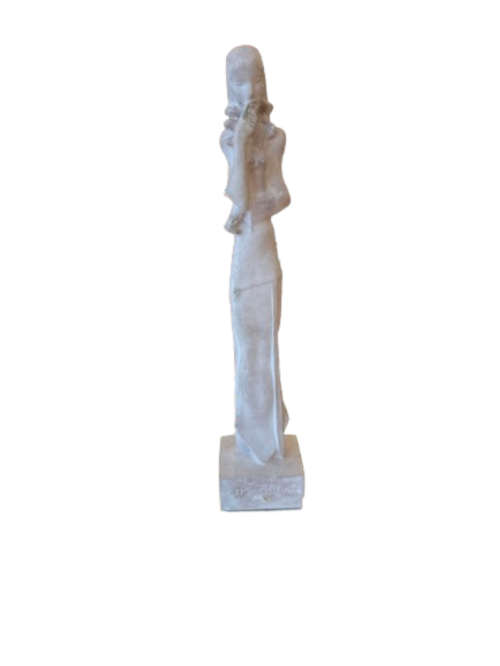Cette réduction de la façade des Folies Bergère était destinée aux clients les plus importants.
- Bas-relief en stuc doré
- Cadre en bois noirci et chêne avec cartouche M. Pico
- Provenance : collection privée
- Années 30s
Dimensions
H : 62,5 cm L : 63 cm
_________________________________________________________ Maurice PICAUD, known as PICO (1900-1977), was a French architect, decorator, and painter trained at the École Boulle. A collaborator of Jacques-Émile RUHLMANN, he also made a name for himself as a press caricaturist. Among his works rooted in the Art Deco movement, the most famous is the façade of the Folies Bergère in Paris (1926), depicting the Russian dancer Lila Nikolska. He also created murals for the Montdidier town hall in the 1930s.his reduced version of the Folies Bergère façade was intended for the most important clients.
- Gilded stucco bas-relief
- Blackened wood and oak frame with M. Pico cartouche
- Provenance: private collection
- 1930s
Dimensions
H: 24.6 in L: 24.8 in/H: 62.5 cm L: 63 cm
